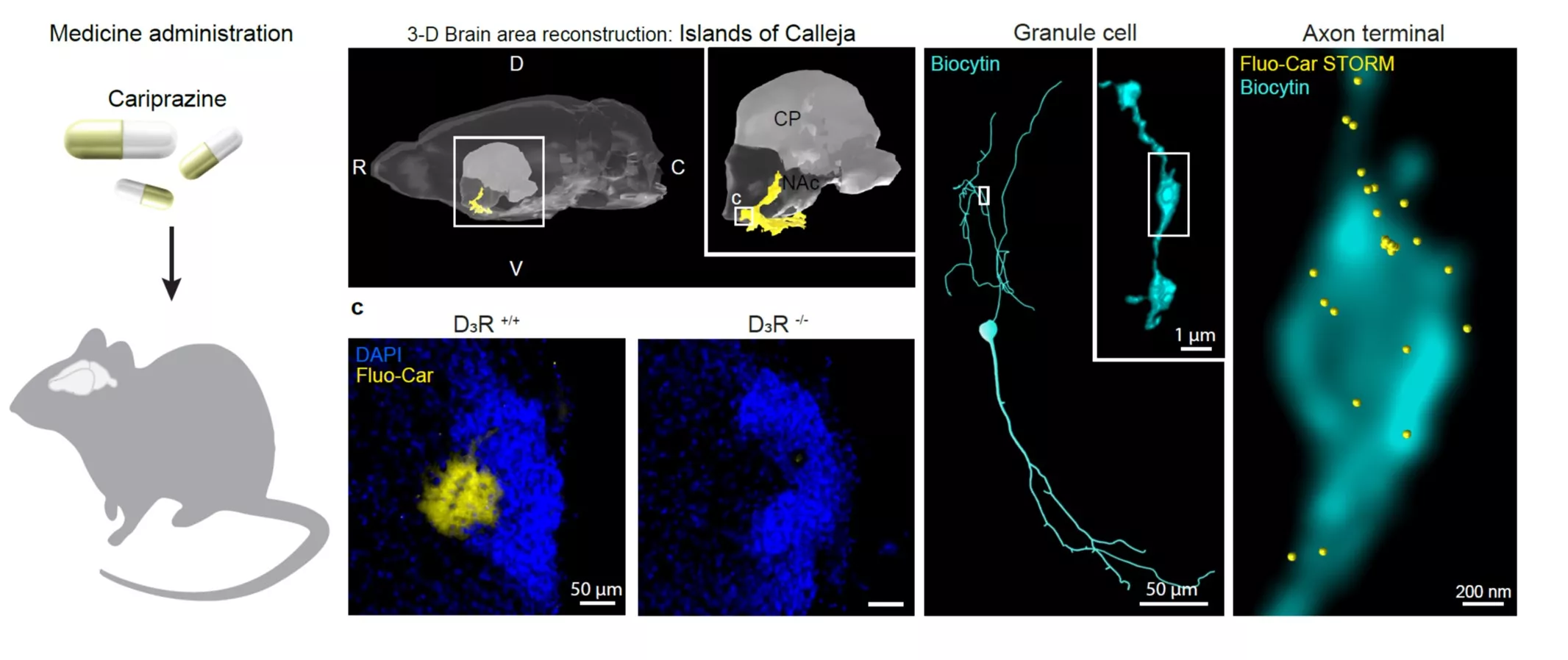ELKH researchers led by István Katona and György Keserű at the Institute of Experimental Medicine and at the Institute of Natural Sciences, respectively, developed a novel method that enables the visualization of drug binding on the surface of neurons at nanoscale precision.
The tremendous complexity of the nervous system represents a major challenge for understanding and treating psychiatric disorders. Several hundred cell types in the brain produce about ~20,000 proteins. The spatial density of these proteins that are often important drug targets undergoes substantial reorganization in brain disorders. These molecular changes take place at the nanoscale level that renders their measurement difficult. Moreover, the magnitude and direction of the altered protein distribution is cell-type specific. Therefore, new approaches are required to detect the precise nanoscale distribution of drug binding sites to better understand the mechanisms of therapeutics actions and the potential side effects of medicines acting on the brain.
To accomplish this goal, researchers at ELKH developed a novel methodology to perform pharmacological measurements of receptors, ion channels and enzymes in a cell-type-specific manner at the nanoscale level with the help of fluorescent small molecules. They termed the new approach PharmacoSTORM that is based on STochastic Optical Reconstruction Microscopy (STORM) super-resolution imaging. By exploiting PharmacoSTORM, the ELKH researchers discovered that cariprazine, a new medicine developed by the Gedeon Richter pharmaceutical company in Hungary, primarily binds to granule cells located in the Islands of Calleja. The physiological and pathophysiological significance of this brain region is not well understood. Cariprazine is one of the most promising new drugs in the treatment of schizophrenia, bipolar disorder and in major depression as an adjunctive therapy. Cariprazine reached blockbuster status and has a $1 billion market. Therefore, the discovery of the Hungarian researchers, besides the methodical innovation, will pave the way to understand the mechanisms of action of cariprazine as well as to gain insights into the neurobiological mechanisms underlying psychiatric disorders.

The highest binding density of cariprazine is found on D3 dopamine receptors in the Islands of Calleja. The main cell type in this brain region is the granule cells. Their axon terminals are covered by fluorescent cariprazine binding sites. This discovery suggests that the Islands of Calleja granule cells play an important role in psychiatric disorders.
The co-first authors of the study are Susanne Prokop and Péter Ábrányi-Balogh and the study was published in the Open Access journal Nature Communications.
The research was supported by the National Brain Research Program and the Frontline Research Program of the National Research, Development and Innovation Office and the Semmelweis University grant EFOP-3.6.3-VEKOP-16-2017-00009.
Publication:
Prokop S., Ábrányi-Balogh P., Barti B., Vámosi M., Zöldi M., Barna L., Urbán G.M., Tóth D.A., Dudok B., Egyed A., Deng H., Leggio G.M., Hunyady L., van der Stelt M., Keserű G.M. and Katona I. (2021) PharmacoSTORM nanoscale pharmacology reveals cariprazine binding on Islands of Calleja granule cells. Nature Communications 12, 6505.